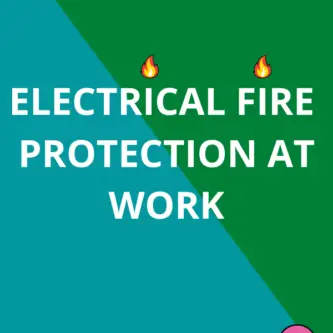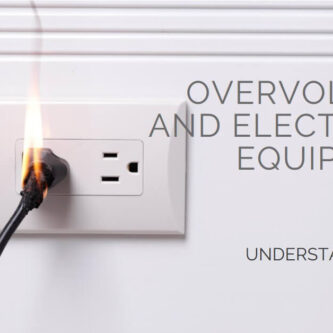Electrical circuits are used in various applications, ranging from powering homes and businesses to running complex industrial processes.
To ensure optimal performance and safety, it is essential to maintain the integrity of the circuits.
Corrosion is a common problem in electrical circuits, and it can have significant effects on their operation.
In this article, we will explore the causes, effects, diagnosis, prevention, and repair of corroded connections in electrical circuits.
II. Causes of Corroded Connections
Corrosion is a natural process that occurs when metal is exposed to moisture, oxygen, and other environmental factors.
In electrical circuits, corrosion can occur due to the following reasons:
Exposure to Moisture and Humidity
Water is a conductor of electricity, and when it comes into contact with metal, it can create a pathway for electrical current.
Moisture and humidity in the air can also cause metal to corrode over time. When electrical circuits are exposed to water or high levels of humidity, the metal connections can start to corrode, leading to increased resistance and voltage drop.
Exposure to Chemicals and Contaminants
Electrical circuits can be exposed to various chemicals and contaminants, such as acids, salts, and pollutants.
When these substances come into contact with metal connections, they can cause corrosion.
This type of corrosion can be particularly severe, as it can quickly degrade the metal and lead to electrical failure.
Age and Wear
Over time, metal connections in electrical circuits can wear out due to repeated use, heat, and other factors.
As metal corrodes, it weakens the connection, leading to increased resistance and voltage drop.
This can cause the circuit to become less efficient, leading to increased energy consumption and reduced performance.
III. Effects of Corroded Connections on Circuits
Corroded connections can have various effects on electrical circuits, including:
Increased Resistance and Voltage Drop
When metal corrodes, it creates an additional resistance to the flow of electrical current. This increased resistance can cause voltage drop across the connection, leading to reduced performance and efficiency of the circuit.
This can cause the circuit to draw more power than it needs, leading to increased energy consumption and higher costs.
Overheating and Fire Hazards
Corroded connections can also cause the circuit to overheat, as the additional resistance generates heat.
This can lead to a fire hazard, as the heat can cause insulation to melt and wires to short-circuit.
Overheating can also damage components in the circuit, leading to reduced lifespan and increased maintenance costs.
For more information read my comprehensive article, Don’t Let Cable Overheating Put Your Home At Risk!
Interruptions and Loss of Power
Corroded connections can cause interruptions and loss of power in electrical circuits. When a connection becomes corroded, it can create a high-resistance path that can impede the flow of electricity.
Over time, this high resistance can cause the connection to fail completely, resulting in an interruption in the circuit and a loss of power.
Diagnosis of Corroded Connections
The diagnosis of corroded connections can be done through visual inspection, electrical testing, and thermal imaging.
Visual inspection involves checking the physical condition of the connections to see if there is any visible corrosion or damage.
Electrical testing involves measuring the resistance of the connections to determine if there is any increase in resistance due to corrosion.
Thermal imaging involves using an infrared camera to detect any hot spots that may be caused by corroded connections.
Prevention and Repair of Corroded Connections
Prevention and repair of corroded connections can be done through regular maintenance and cleaning, the use of corrosion-resistant materials, and replacement of damaged components.
Regular maintenance and cleaning involve inspecting the connections on a regular basis and cleaning them to prevent the buildup of corrosion.
The use of corrosion-resistant materials involves using materials that are less susceptible to corrosion, such as stainless steel or copper.
The replacement of damaged components involves replacing any connections or components that are damaged or corroded beyond repair.
Conclusion
In conclusion, corroded connections can have a significant impact on the performance and safety of electrical circuits.
It is important to be proactive in the maintenance and repair of these connections to prevent interruptions and loss of power.
Regular inspection, testing, and cleaning can help identify and address corroded connections before they cause problems.
you work With Electricity! Don’t leave empty-handed!
Looking to stay ahead of the game in the world of electrical engineering? Subscribe to my YouTube channel and gain access to exclusive content you won’t find anywhere else!
The staff I recommend (Amazon Affiliate Links to products I believe are high quality):
- Economy 120 Volt/60Hz AC Power Source – Step-Down Voltage & Frequency Converters 1800W
- UNI-T Digital Multimeter Tester UT139C
- 50-Amp Extension Cord for RV “100ft”
- Voltage Stabilizer 110/220v
- Hair Dryer “best selling“
- TOSHIBA EM131A5C-BS Countertop Microwave Ovens
Disclaimer: This contains affiliate links to Amazon products. I may earn a commission for purchases made through these links.


